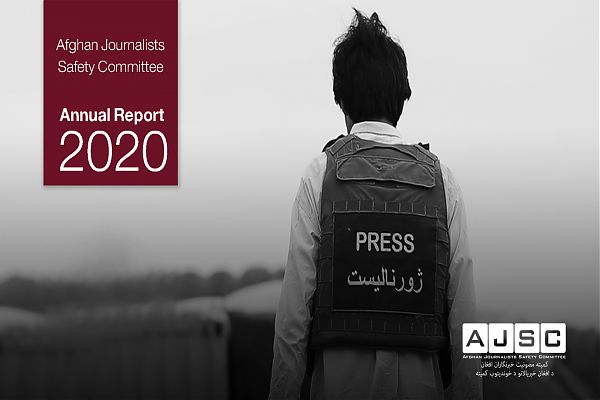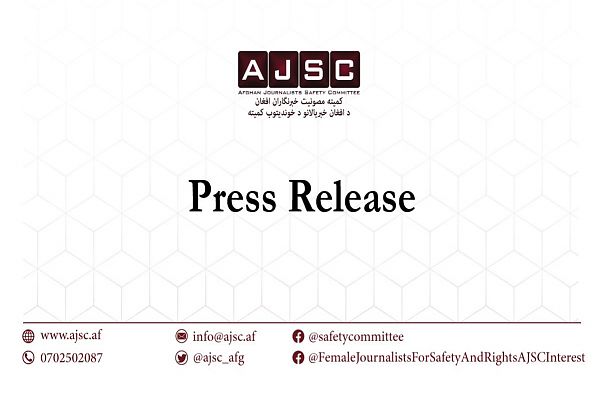Kabul, Afghanistan: Afghan Journalists Safety Committee (AJSC) releases its Annual Report today on the state of press freedom and journalists’ safety in 2020 in Afghanistan.
The report depicts the overall safety situation of journalists in 2020, the targeted killings of journalists and media workers and its impact on media activities, the status of government’s investigation on journalists’ cases of murder, peace talks and the status of freedom of expression and freedom of the media.
In 2020, AJSC recorded threats and violence against 132 journalists and media workers, which includes killing of journalists, injuring, physical assault, kidnapping, various forms of threats, theft, verbal, legal and administrative abuse. 2020 data shows 26% increase in violence and threats compared to 2019 in which AJSC recorded violence and threats against 105 journalists and media workers.
7 journalists and media workers were murdered—5 as a result of targeted killing and 2 as a result of improvised explosives. 18 journalists and media workers were injured in connection with reporting and while on duty. 10 journalists were physically assaulted, 47 threatened, 28 verbally abused and 13 journalists and media workers faced legal and administrative abuse by media managers. 7 journalists were kidnapped and 2 experienced theft while gathering content from the field.
Based on the data collected by AJSC, Taliban and Daesh account for majority of violence and threats against journalists. Government officials come second. The nature of threats and violence exercised by the government officials is often mild while threats and violence posed by the Taliban and Daesh are usually harsh and bloody. Government officials usually exercise verbal threats and physical assault, while Daesh and the Taliban often resort to direct attacks on media and journalists.
“The dramatic increase in the levels of direct attacks and serial killings of journalists at the end of 2020 has created widespread fear among media outlets and journalists across Afghanistan. Due to these attacks, the capacity of media outlets to create content is reduced and self-censorship has increased among journalist and media outlets,” said Dr. Najib Sharifi, AJSC Director. “However, in-spite of the existing challenges and threats, media outlets and journalists are carrying out their duty of reporting.” he added.
In this reporting period, the economic impact of Covid-19 has compounded existing financial challenges for media outlets, often frustrating their efforts to raise sufficient funds, and thereby their capacity to generate media content. Due to financial challenges posed by COVID-19, dozens of journalists and media workers have lost their jobs.
The media community remains concerned that the delegation representing the Government of the Islamic Republic of Afghanistan (GoIRA) in negotiations with the Taliban in Doha, Qatar lacks a coherent strategy to preserve key constitutional rights including freedom of speech and a free and independent media. The Taliban’s ideological opposition to these values enhances concerns about the future of such freedoms. Further, the government’s lack of meaningful commitment to investigate the cases of murdered journalists have fueled these concerns.
The report emphasizes on the importance of implementing the Press Freedom Protection Roadmap created by AJSC so values related to press freedom and freedom of expression are preserved during peace talks. AJSC believes that the implementation of the plan and establishment of the Committee to Protect Freedom of Expression and Media will help reduce the concessions media community has to make during the peace talks.
The report offers a series of specific recommendations in relation to alleviating the challenges the media community and press freedom faces. The recommendations are directed at the Afghan government, international community as well as media outlets and media support organizations.
Note: To read the full report in English, click here.


